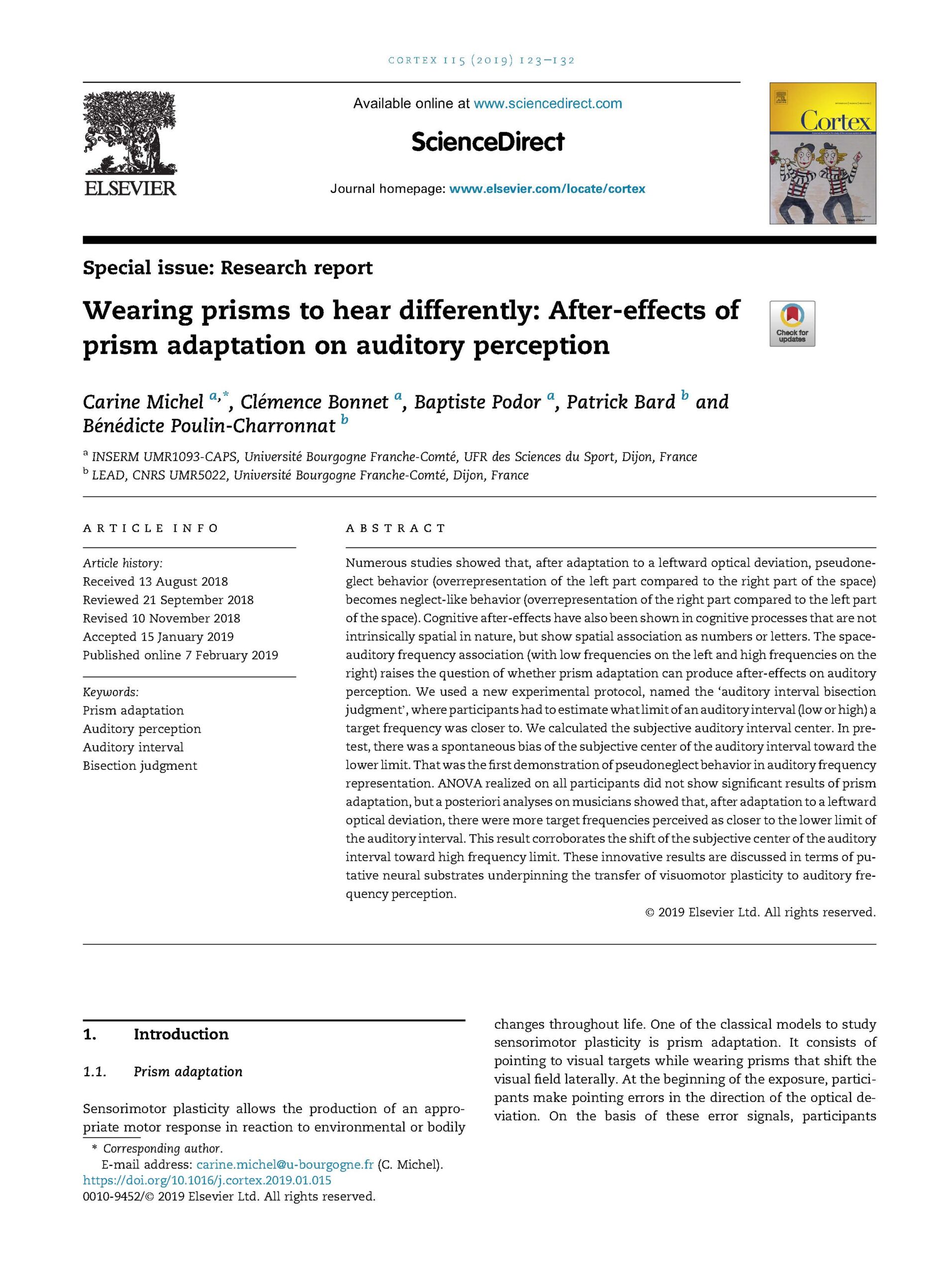Numerous studies showed that, after adaptation to a leftward optical deviation, pseudoneglect behavior (overrepresentation of the left part compared to the right part of the space) becomes neglect-like behavior (overrepresentation of the right part compared to the left part of the space). Cognitive after-effects have also been shown in cognitive processes that are not intrinsically spatial in nature, but show spatial association as numbers or letters. The space-auditory frequency association (with low frequencies on the left and high frequencies on the right) raises the question of whether prism adaptation can produce after-effects on auditory perception. We used a new experimental protocol, named the ‘auditory interval bisection judgment’, where participants had to estimate what limit of an auditory interval (low or high) a target frequency was closer to. We calculated the subjective auditory interval center. In pretest, there was a spontaneous bias of the subjective center of the auditory interval toward the lower limit. That was the first demonstration of pseudoneglect behavior in auditory frequency representation. ANOVA realized on all participants did not show significant results of prism adaptation, but a posteriori analyses on musicians showed that, after adaptation to a leftward optical deviation, there were more target frequencies perceived as closer to the lower limit of the auditory interval. This result corroborates the shift of the subjective center of the auditory interval toward high frequency limit. These innovative results are discussed in terms of putative neural substrates underpinning the transfer of visuomotor plasticity to auditory frequency perception.
Wearing prisms to hear differently: After-effects of prism adaptation on auditory perception
